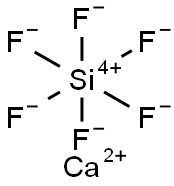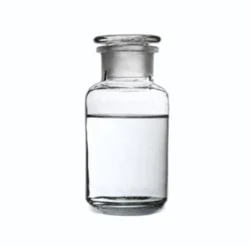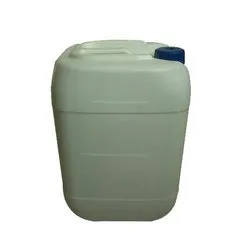Hexafluorosilicic acid
Synonym(s):Hexafluorosilicic acid;Fluorosilicic acid;Hydrogen hexafluorosilicate;Adrenocorticotropic hormone fragment 1-39;Corticotropin A
- CAS NO.:16961-83-4
- Empirical Formula: F6H2Si
- Molecular Weight: 144.09
- MDL number: MFCD00036289
- EINECS: 241-034-8
- SAFETY DATA SHEET (SDS)
- Update Date: 2025-01-27 09:38:02

What is Hexafluorosilicic acid?
Description
Hexafluorosilicic acid is a kind of inorganic acid. It is majorly used for the fluoridation of water in United State to minimize the incidence of dental caries and dental fluorosis. For chemical synthesis, it is majorly used for the manufacturing of aluminum fluoride and cryolite as well as many kinds of hexafluorosilicate salts. It can also be used for the production of silicon and silicon dioxide. It can also be used as an electrolyte in the Betts electrolytic process for refining lead. It is also a specialized reagent in organic synthesis for cleaving Si–O bonds of silyl ethers.
Chemical properties
Fluosilicic acid,H2SiF6, also known as hydrofluorosilicic acid,is a colorless liquid that is soluble in water. It is highly corrosive and toxic,attacking glass and stoneware. Fluosilicic acid is used in water fluoridation, electroplating, and in manufacturing enamels and cement.
Chemical properties
Fluorosilicic acid is a transparent, colorless fuming liquid.
Physical properties
d 1.220 g cm?3 for a 25% aq solution.
The Uses of Hexafluorosilicic acid
A fluoride source with both protic and Lewis acid properties providing efficient cleavage of silicon–oxygen bonds, e.g. silyl ether deprotection.
The Uses of Hexafluorosilicic acid
A 1-2% solution is used widely for sterilizing equipment in brewing and bottling establishments. Other concentrations are used in the electrolytic refining of lead, in electroplating, for hardening cement, crumbling lime or brick work, for the removal of lime from hides during the tanning process, to remove molds, as preservative for timber.
The Uses of Hexafluorosilicic acid
Hexafluorosilicic acid is commonly used as a source of fluoride. It is converted to a variety of useful hexafluorosilicate salts. It is also used as an electrolyte in the Betts electrolytic process for refining lead. It is an important organic reagent for cleaving Si-O bonds of silyl ethers. Further, it is used as wood a preservation agent and also used in surface modification of calcium carbonate.
What are the applications of Application
Fluosilicic acid is reagent utilized in the selective cleavage of t-Bu-Me2-silyl ethers
General Description
A colorless fuming liquid with a penetrating pungent odor. Corrosive to metals and tissue. Both the fumes and very short contact with the liquid can cause severe and painful burns. Used in water fluoridation, in hardening cement and ceramics, as a wood preservative.
Air & Water Reactions
Fumes in air. Soluble in water with release of heat and corrosive fumes.
Reactivity Profile
Hexafluorosilicic acid can react with strong acids (such as sulfuric acid) to release fumes of toxic hydrogen fluoride. Attacks glass and materials containing silica. Reacts exothermically with chemical bases (examples: amines, amides, inorganic hydroxides). Reacts with active metals, including iron and aluminum to dissolve the metal and liberate hydrogen and/or toxic gases. Can initiate polymerization in certain alkenes. Reacts with cyanide salts and compounds to release gaseous hydrogen cyanide. Flammable and/or toxic gases are also often generated by reactions with dithiocarbamates, isocyanates, mercaptans, nitrides, nitriles, sulfides, and weak or strong reducing agents. Additional gas-generating reactions may occur with sulfites, nitrites, thiosulfates (to give H2S and SO3), dithionites (SO2), and carbonates. Can catalyze (increase the rate of) chemical reactions. Decomposes when heated to the boiling point to produce very toxic and corrosive hydrogen fluoride gas.
Hazard
Extremely corrosive by skin contact and inhalation.
Health Hazard
Inhalation of vapor produces severe corrosive effect on mucous membrane. Ingestion causes severe burns of mouth and stomach. Contact with liquid or vapor causes severe burns of eyes and skin.
Fire Hazard
Special Hazards of Combustion Products: Irritating fumes of hydrogen fluoride may form in fire.
Flammability and Explosibility
Not classified
Industrial uses
Hydrofluorosilicic acid (H2SiF6) is a colorless to light brown liquid. It is also manufactured from calcium fluoride or other fluoride-containing products. Hydrofluorosilic acid is a strong depressant for many silicates during flotation of a number of oxidic minerals. It is used for gangue depression during flotation of tin, columbite and tantalite.
Safety Profile
Poison by subcutaneous route. A corrosive irritant to sktn, eyes, and mucous membranes. Will react with water or steam to produce toxic and corrosive fumes. When heated to decomposition it emits toxic fumes of F-. See also FLUORIDES.
Potential Exposure
A solution of fluorosilicic acid is used for sterilization in the brewing and bottling industry, elec trolytic refining of lead; electroplating, hardening cement; removing mold, and others.
First aid
this chemical gets into the eyes, remove anycontact lenses at once and irrigate immediately for at leastFluosilicic acid 134515 min, occasionally lifting upper and lower lids. Seekmedical attention immediately. If this chemical contactsthe skin, remove contaminated clothing and wash immediately with soap and water. Seek medical attention immediately. If this chemical has been inhaled, remove fromexposure, begin rescue breathing (using universal precautions, including resuscitation mask) if breathing hasstopped and CPR if heart action has stopped. Transferpromptly to a medical facility. When this chemical hasbeen swallowed, get medical attention. If victim is conscious, administer water or milk. Do not induce vomiting.Medical observation is recommended for 24-48 h afterbreathing overexposure, as pulmonary edema may bedelayed. As first aid for pulmonary edema, a doctor orauthorized paramedic may consider administering a corticosteroid spray.Note to physician: Inject intravenously 10 mL of 10% calcium gluconate solution. Gastric lavage with lime water of1% calcium chloride.
Storage
(1) Color Code—White: Corrosive or ContactHazard; Store separately in a corrosion-resistant location.(2) Color Code—Blue: Health Hazard/Poison: Store in asecure poison location. Prior to working with this chemicalyou should be trained on its proper handling and storage.Store in a cool, dry area that is well ventilated. Protect fromdamage. Avoid acids. Concentrated solution can be storedin glass but lead is preferred.
Shipping
UN1778 Fluorosilicic acid, Hazard class: 8; Labels: 8-Corrosive material.
Incompatibilities
The aqueous solution is a strong acid. Reacts with water or steam to produce toxic and corrosive fumes of hydrogen fluoride. Incompatible, and may react violently with: bases, aliphatic amines; alkanolamines, alkylene oxides; aromatic amines; amides, ammonia, ammonium hydroxide; calcium oxide; epichlorohydrin, iso cyanates, oleum, organic anhydrides; sulfuric acid; strong oxidizers; vinyl acetate; water. Attacks glass, concrete, and ceramics. The anhydrous form dissociates almost instantly into silicon tetrafluoride and hydrogen fluoride.
Waste Disposal
Add slowly to a large amount of soda ash in solution. Discharge to sewer with large volumes of water
References
Robinson, Tim. "Innovative Processes in Electrometallurgy." Innovative Process Development in Metallurgical Industry. Springer International Publishing, 2016. 385- 392.
Sarawade, Pradip B., et al. "Recovery of high surface area mesoporous silica from waste hexafluorosilicic acid (H 2 SiF 6) of fertilizer industry." Journal of hazardous materials 173.1 (2010): 576-580.
Kauffman, Joel M. "Water fluoridation: a review of recent research and actions." Journal of American Physicians and Surgeons 10.2 (2005): 38.
Krot, V. V., et al. "ChemInform Abstract: Preparation of Amorphous Silicon Dioxide from Hexafluorosilicic Acid." Cheminform 23.48(1992):no-no.
Zorya, L., and V. Krot. "Method of high-purity silica production from hexafluorosilicic acid." Reaction Kinetics & Catalysis Letters 50.1-2(1993):349-354.
Properties of Hexafluorosilicic acid
| Boiling point: | 108-109°C |
| Density | 1.22 g/mL at 20 °C (lit.)
1.31 g/mL at 25 °C |
| vapor pressure | 23hPa at 19.85℃ |
| refractive index | 1.3500 |
| Flash point: | 108-109°C |
| storage temp. | −20°C |
| solubility | H2O: 1 mg/mL, clear, colorless |
| form | Liquid |
| pka | 1.83[at 20 ℃] |
| Specific Gravity | 1.38 (40%) |
| color | Clear colorless |
| Water Solubility | Miscible with water. |
| Hydrolytic Sensitivity | 0: forms stable aqueous solutions |
| Merck | 14,4182 |
| Exposure limits | ACGIH: TWA 2.5 mg/m3 NIOSH: IDLH 250 mg/m3; TWA 2.5 mg/m3 |
| Stability: | Stable in aqueous solution. |
| CAS DataBase Reference | 16961-83-4(CAS DataBase Reference) |
| EPA Substance Registry System | Fluosilicic acid (16961-83-4) |
Safety information for Hexafluorosilicic acid
| Signal word | Danger |
| Pictogram(s) |
 Corrosion Corrosives GHS05  Skull and Crossbones Acute Toxicity GHS06 |
| GHS Hazard Statements |
H302:Acute toxicity,oral H311:Acute toxicity,dermal H314:Skin corrosion/irritation |
| Precautionary Statement Codes |
P270:Do not eat, drink or smoke when using this product. P280:Wear protective gloves/protective clothing/eye protection/face protection. P301+P312:IF SWALLOWED: call a POISON CENTER or doctor/physician IF you feel unwell. P303+P361+P353:IF ON SKIN (or hair): Remove/Take off Immediately all contaminated clothing. Rinse SKIN with water/shower. P305+P351+P338:IF IN EYES: Rinse cautiously with water for several minutes. Remove contact lenses, if present and easy to do. Continuerinsing. |
Computed Descriptors for Hexafluorosilicic acid
| InChIKey | AUJBMDCSBIPDEH-UHFFFAOYSA-N |
Hexafluorosilicic acid manufacturer
Jay Intermediates And Chemicals
Fengyuan India Private Limited
New Products
BOC-L-4-HYDROXYPROLINE 2-nitro 3-hydroxy pyridine 2,6-Dichloropyridin-4-amine 2,3 Diamino pyridine 5-Iodo-2-(1-methylethyl)-3(2H)-pyridazinone 1-Azetidinecarboxylic acid, 3-[(3S)-1-(trans-3-carboxy-3-methylcyclobutyl)-3-piperidinyl]-, 1-(1,1-dimethylethyl) ester Tert-Butyl N-[3-(dimethylcarbamoyl)prop-2-en-1-yl]carbamate 1-(difluoromethyl)-N-methylcyclobutan-1-amine 2-(4-Methyl-1,2,5-oxadiazol-3-yl)-1H-benzimidazole 6-(4-iodophenyl)-1-oxa-6-azaspiro[3.3]he Trimethyl(phenylthio)silane Polycaprolactone(2000)-PEG(20000)-Polycaprolactone(2000) Diacrylate Diethylene Glycol Monoethyl Ether, PolyoxyethyleneOleylCetylEtherSulfosuccinate Ascorbyl Tetraisopalmitate or Tetrahexyldecyl Ascorbate Castor Oil, Ethoxylated, Cremophor EL or PEG-35 Castor Oil Tween 20 or Polysorbate 20 Acetone-d6 (R)-2-Mercaptobutanoic acid 3-iodo-1H-pyrazolo[3,4-d]pyrimidin-4-amine 3-(naphthalen-1-ylsulfonyl)-1H-indazol-5-amine methyl 5-amino-3-(1,1-dioxidotetrahydro-2H-1,2-thiazin-2-yl)-2-fluorobenzoate 7-methoxy-8-(2-morpholinoethoxy)-4-((3,4,5-trimethoxyphenyl)amino)benzo[g]quinoline-3-carbonitrile Dimethylaluminum isopropoxideRelated products of tetrahydrofuran








You may like
-
 16961-83-4 98%View Details
16961-83-4 98%View Details
16961-83-4 -
 Hydrofluorosilicic Acid 98%View Details
Hydrofluorosilicic Acid 98%View Details -
 Hexafluorosilicic acid CAS 16961-83-4View Details
Hexafluorosilicic acid CAS 16961-83-4View Details
16961-83-4 -
 Fluosilicic acid CAS 16961-83-4View Details
Fluosilicic acid CAS 16961-83-4View Details
16961-83-4 -
 Fluosilicic Acid Liquid, 99%View Details
Fluosilicic Acid Liquid, 99%View Details
16961-83-4 -
 Hexafluorosilicic Acid (Industrial) 23%&40%, Packaging Size: 1100kg/Ibc DrumView Details
Hexafluorosilicic Acid (Industrial) 23%&40%, Packaging Size: 1100kg/Ibc DrumView Details
16961-83-4 -
 Fluosilicic Acid, Packaging Type: HDPE Carboy, Packaging Size: 40 KgView Details
Fluosilicic Acid, Packaging Type: HDPE Carboy, Packaging Size: 40 KgView Details
16961-83-4 -
 Fluosilicic Acid for Synthesis, 500ml BottleView Details
Fluosilicic Acid for Synthesis, 500ml BottleView Details
16961-83-4
